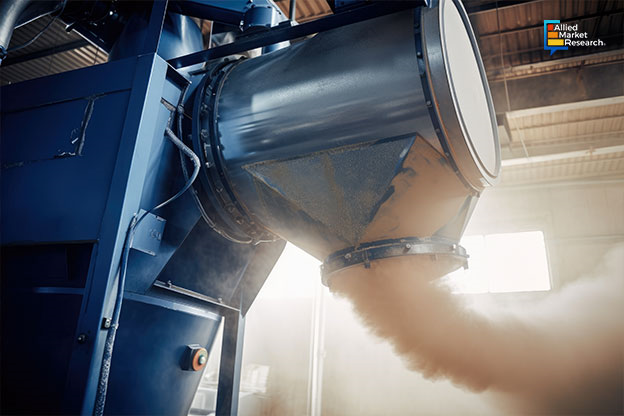A Quick Look at Popular Dust Suppression Control Techniques and the Growth Drivers of the Industry.

30 Oct
2023
Dust is a major source of air pollution. Be it any industry, dust hampers work efficiency and productivity in general. Moreover, dust contains pollen and harmful materials like asbestos, pesticides, bacteria, etc. Thus, continuous exposure to dust particles can be harmful to health. Hence, dust suppression control becomes important to reduce the impact of dust. It refers to the use of liquids and chemicals to prevent the airborne dissemination of fine dust particles.
Best Dust Suppression Control Techniques
Watering the road or the dusty surface is one of the most common methods used for dust suppression and control. Moisture basically binds dust particles together, thereby preventing the dissemination of the particles. Watering technique is mostly used in rural areas as the technique is very cheap and watering can be done easily. However, watering a surface is not always possible. This is especially true in industries or similar areas where indiscriminate use of water is prohibited. In such cases, certain deliquescent chemicals are used. Calcium chloride and magnesium chloride are the two most popular dust control salts. These salts suck moisture from the air, thus binding the dust particles together. Apart from these two salts, petroleum-based binders and organic dust suppressants are also widely used. Petroleum-based binders such as asphalt stick to the dust particles and increase their weight which prevents their airborne dissemination.
Growth drivers of the industry
One of the sectors where dust suppression control techniques are widely used is the mining industry. In fact, governments in several countries have made it mandatory for mines to have dust suppression control measures in place. This has increased the demand for dust suppression chemicals and techniques which will promote growth of the dust suppression control market. Additionally, a growth in awareness regarding the importance of growth suppression might also play a huge role in intensifying the demand for dust suppression chemicals. All these factors are expected to help the market register a CAGR of 4.7% during the 2023-2032 period.
A detailed analysis of the market dynamics has shown that the industry is generally classified on the basis of chemicals and end-use industry. By chemicals, the magnesium chloride sub-segment is predicted to have the highest CAGR of 5.3%, followed by lignin sulfonate sub-segment which will grow at a CAGR of 4.8% by 2032. Both calcium chloride sub-segment and polymeric emulsions sub-segment will register a CAGR of 4.5 % during the same period. The others sub-segment will have a growth rate of 4.0% during the 2023-2032 period. On the basis of country, the China dust suppression control market is estimated to demonstrate the highest CAGR of 6.0% by 2032.
Product launches by major companies in the industry are also expected to expand the scope of the market. For instance, in April 2022, Inmalo, a manufacturing company, announced the launch of Motofog MF20D and MF40D dust suppression control systems. Such product launches help the company and the market to increase its footprint across the globe.
Thus, the dust suppression control market is expected to witness a massive surge due to growing application of dust suppression techniques in the mining industry. Moreover, rising popularity of magnesium chloride as a dust suppressant and growth of market in China will further augment the growth rate of this industry.

Koyel Ghosh
Author’s Bio- Koyel Ghosh is a blogger with a strong passion and enjoys writing in miscellaneous domains, as she believes it lets her explore a wide variety of niches. She has an innate interest in creativity and enjoys experimenting with different writing styles. A writer who never stops imagining, she has been serving the corporate industry for the last five years.
Avenue: Entire Library membership of Allied Market Research Reports at your disposal
- Avenue is an innovative subscription-based online report database.
- Avail an online access to the entire library of syndicated reports on more than 2,000 niche industries and company profiles on more than 12,000 firms across 11 domains.
- A cost-effective model tailored for entrepreneurs, investors, and students & researchers at universities.
- Request customizations, suggest new reports, and avail analyst support as per your requirements.
- Get an access to the library of reports at any time from any device and anywhere.
Related Post
-
How are Submarine Cables Transforming Global Connectivity with Enhanced User Experience?
-
Endoscopy Procedures: Transformations in Techniques and Applications
-
AI-Powered Video Analytics: How the Product Actually Works for enterprises
-
Painting Robots: Transforming Precision Coating and Creative Applications
-
Innovations in Pharmacovigilance Systems Advancing Patient Safety
-
Understanding Edge Security: Keeping Data Safe Near the Source
-
Exploring the Use and Advancements of 3D Laser Scanners in Professional Applications
-
Reinforcing Industrial Controls with Smarter Tools and Training








